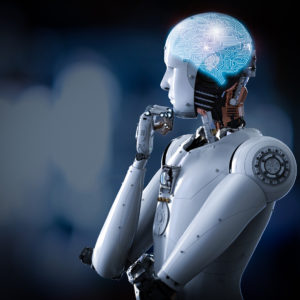If you want to imagine the future of healthcare, you can do no better than to read cardiologist and bestselling author Eric Topol’s trilogy on the subject: “The Creative Destruction of Medicine,” “The Patient Will See You Now,” and “Deep Medicine.”
“Deep Medicine” bears a paradoxical subtitle: “How Artificial Intelligence Can Make Healthcare Human Again.” The book describes the growing interaction of human and machine brains. Topol envisions a symbiosis, with people and machines working together to assist patients in ways that neither can do alone. In the process, healthcare providers will shed some of the mind-numbing rote tasks they endure today, giving them more time to focus on patients.
I recorded an interview with Topol in which we discuss his books. The podcast is titled “Healthcare’s Reluctant Revolution” because one of Topol’s themes is that healthcare is moving too slowly to integrate AI and machine learning (ML) into medicine—a sluggishness that diminishes the quality and quantity of available care.
The first of Topol’s books, “Creative Destruction,” described how technology would transform medicine by digitizing data on individual human beings in great detail. In “The Patient Will See You Now,” he explored how this digital revolution can allow patients to take greater control over their own health and their own care. With this democratization of care, medicine’s ancient paternalism could fade. (In 2017, Topol and I co-authored an essay on “Anatomy and Atrophy of Medical Paternalism.”)
“Deep Medicine” is qualitatively different from the other two books. It has an almost-mystical quality. Intelligent machines engaging in AI and ML arrive at information in ways even their programmers can barely comprehend, if at all. Topol gives a striking example.
Take retinal scans of a large number of people—the sort of scans that your optometrist or ophthalmologist takes. Now, show the scans to the top ophthalmologists in the world and ask for each scan, “Is this person a man or a woman?” The doctors will answer correctly approximately 50 percent of the time. In other words, they have no idea and could do just as well by tossing a coin. Now, run those same scans through a deep neural network (a type of AI/ML system). The machine will answer correctly around 97 percent of the time—for no known reason.
Topol explains how such technologies can improve care. Today, radiologists spend their days intuitively searching for patterns in x-rays, CT scans, and MRIs. In the future, much of the pattern-searching will be automated (and more accurate), and radiologists (who seldom interact with patients today) will have much greater contact with patients.
Today, dermatologists are relatively few in number, so much of the earlier stages of skin care are done by primary care physicians, who have less ability to determine, say, whether a mole is potentially cancerous. The result can be misdiagnosis, delayed diagnosis, and the unnecessary use of dermatologists’ time. In the future, primary care doctors will likely screen patients using smart diagnostic tools, thereby wasting less of patients’ and dermatologists’ time and diagnosing more accurately.
In “Deep Medicine,” Topol tells the story of a newborn experiencing seizures that could lead to brain damage or death. Routine diagnostics and medications weren’t helping. Then, a blood sample was sent to a genomics institute that combed through a vast amount of data in a short time and identified a rare genetic disorder that’s treatable through dietary restrictions and vitamins. The child went home, seizure-free, in 36 hours.
Unfortunately, healthcare’s adoption of such technologies is unduly slow. In our conversation, Topol noted that we have around 150 medical schools, some quite new, and yet “they don’t have any AI or genomics essentially in their curriculum.”
Topol lists some hopes that observers invest in AI: Machines outperforming doctors at all tasks, diagnosing the undiagnosable, treating the untreatable, seeing the unseeable on scans, predicting the unpredictable, classifying the unclassifiable, eliminating workflow inefficiencies, eliminating patient harm, curing cancer, and more.
A realistic sort of optimist, Topol writes: “Over time, AI will help propel us toward each of these objectives, but it’s going to be a marathon without a finish line.”

